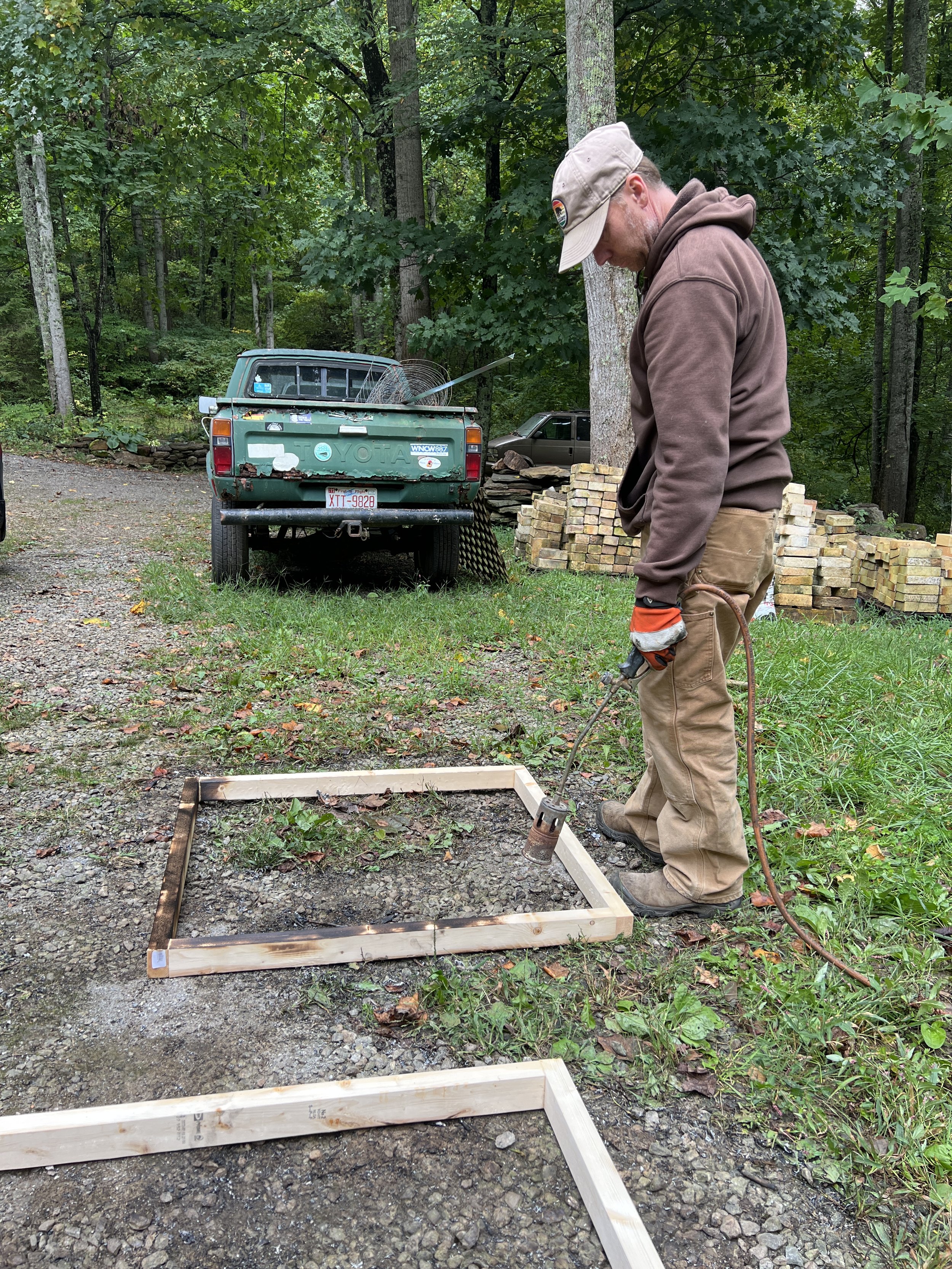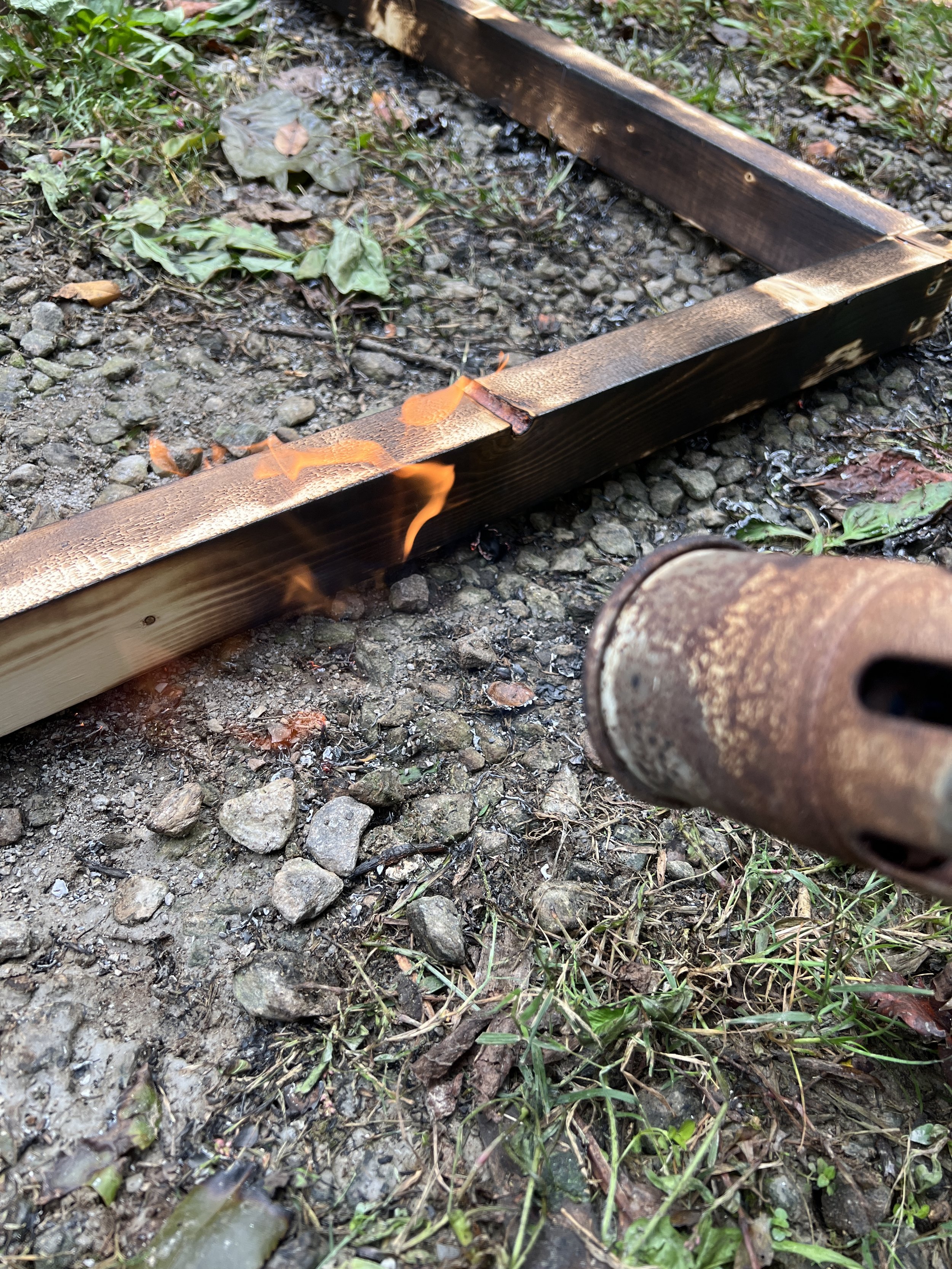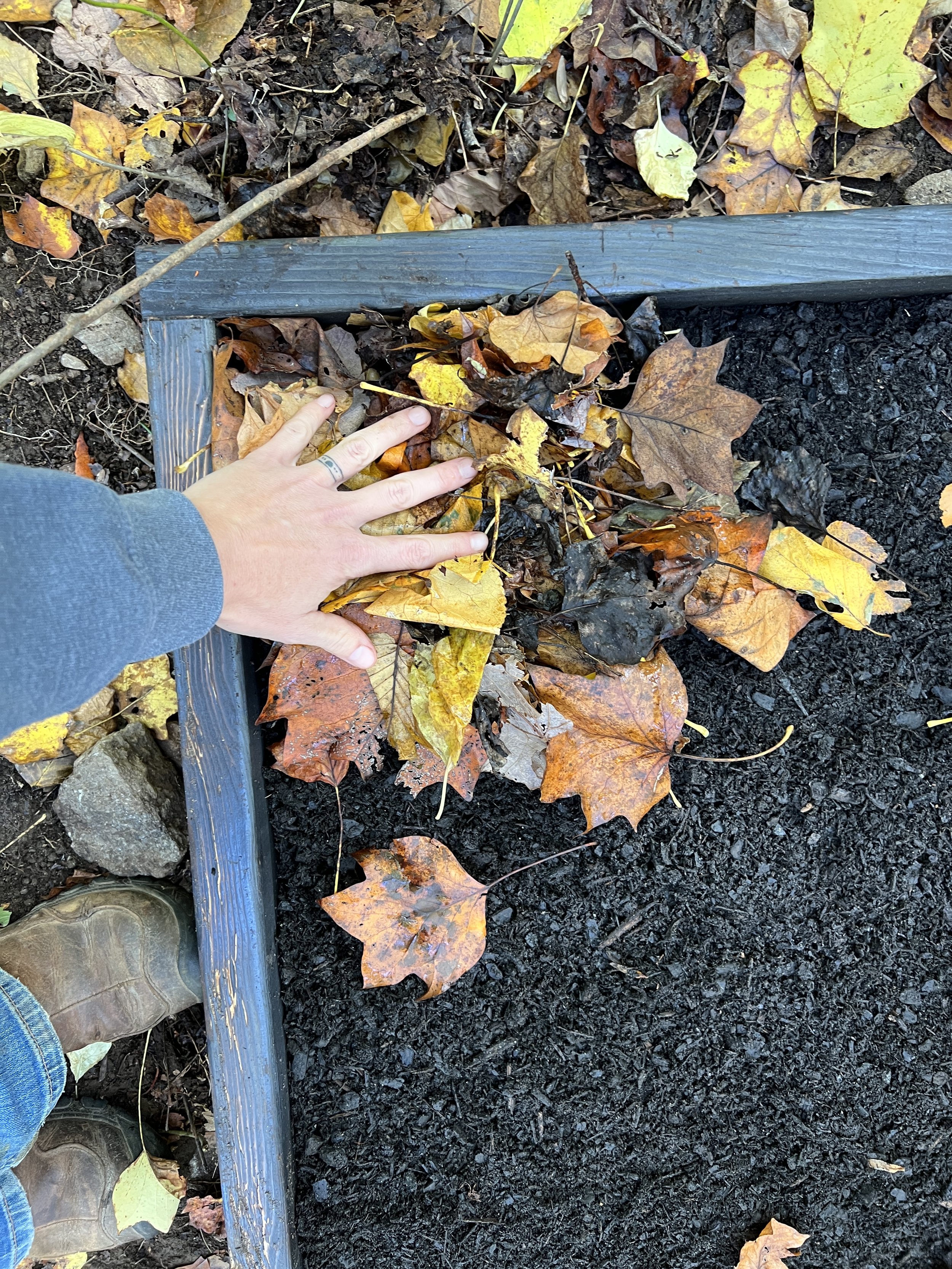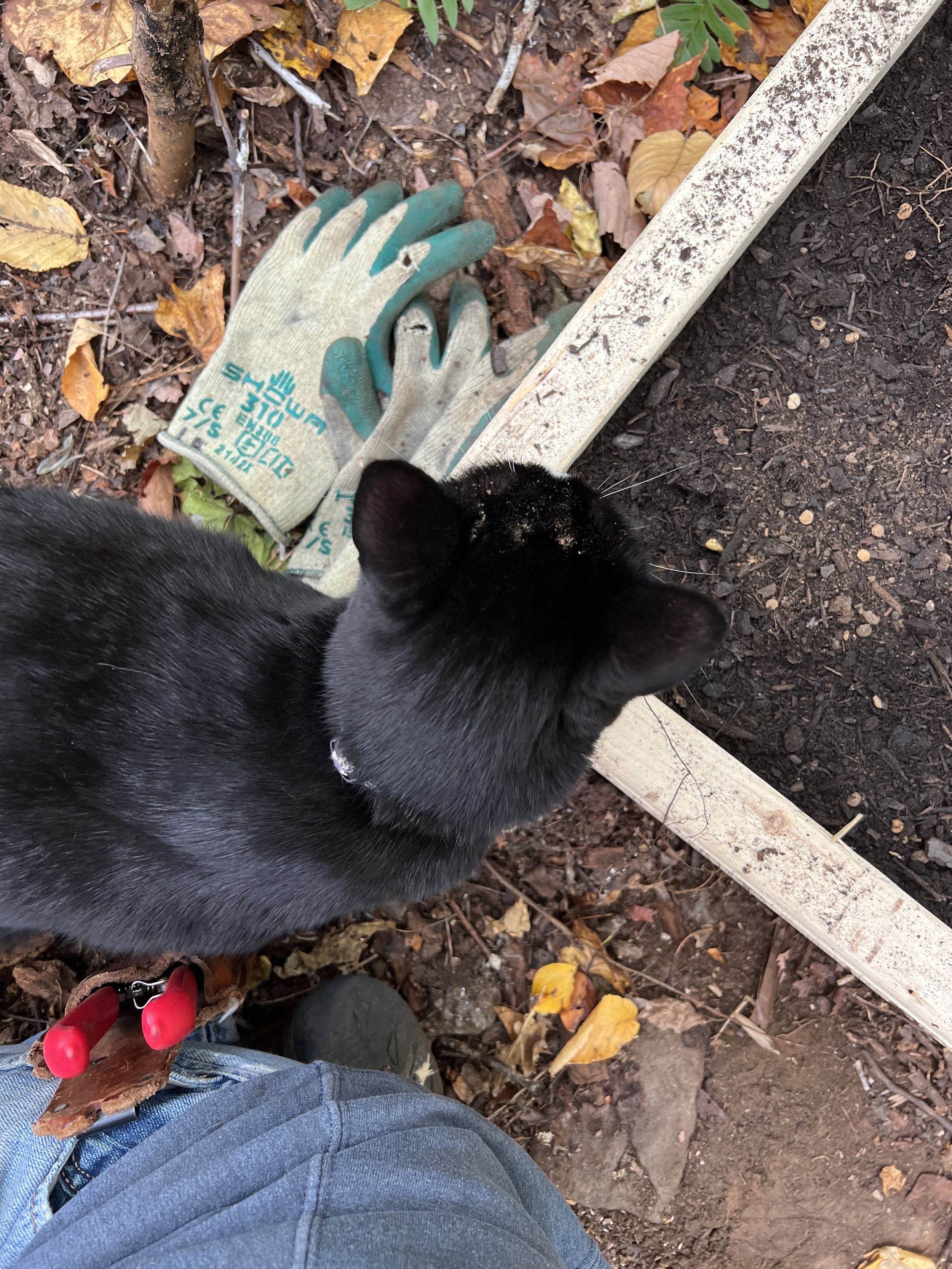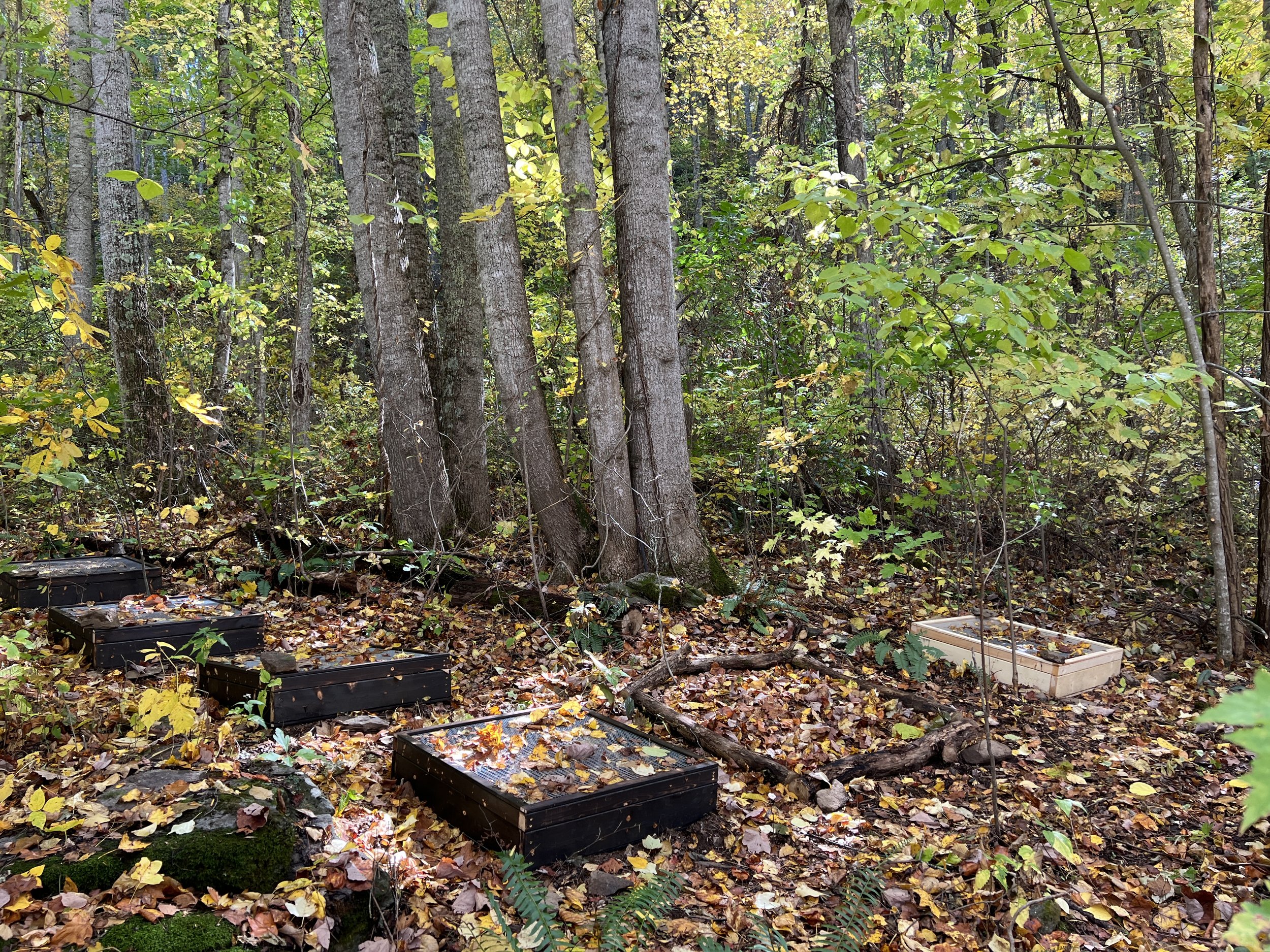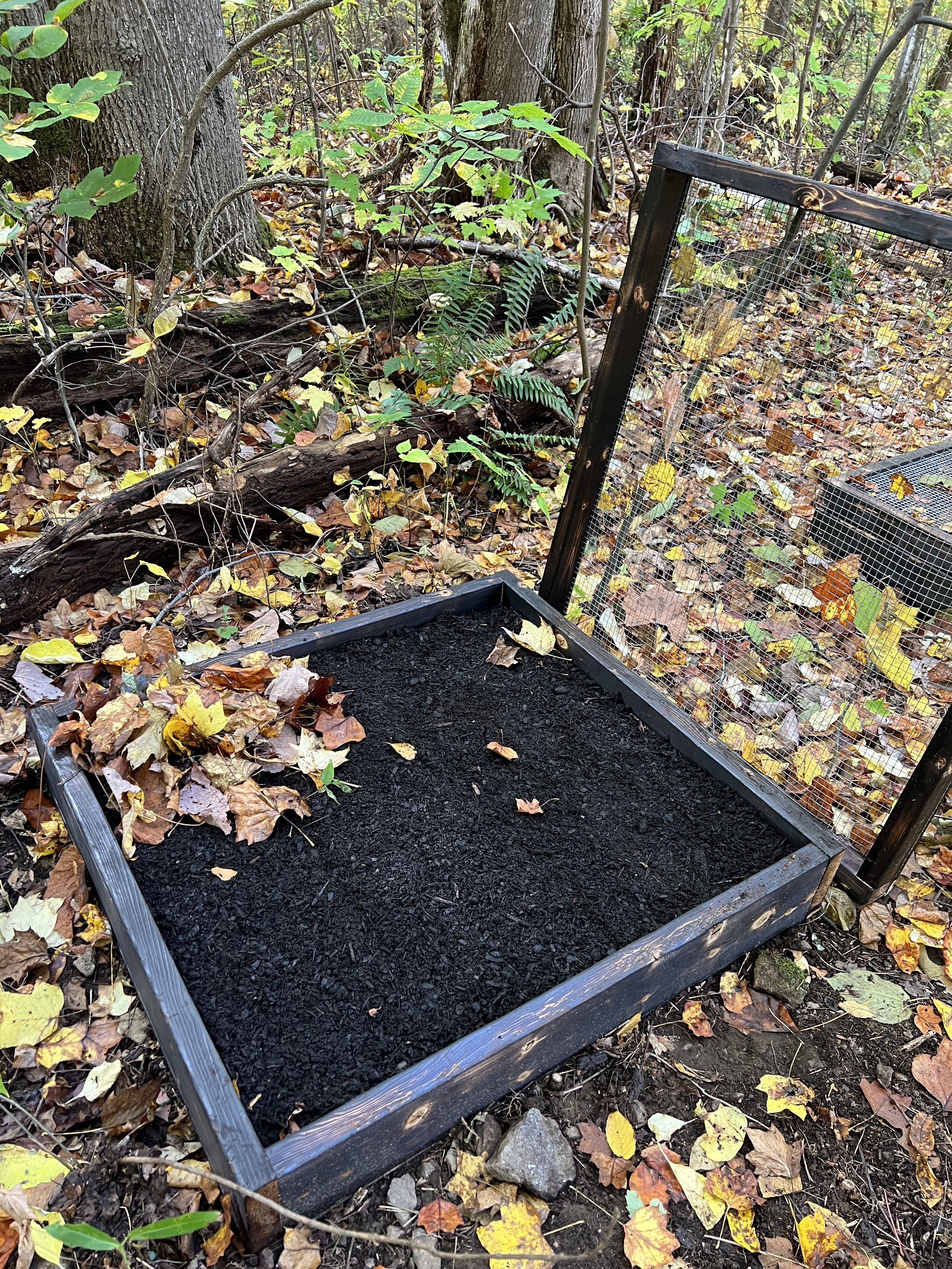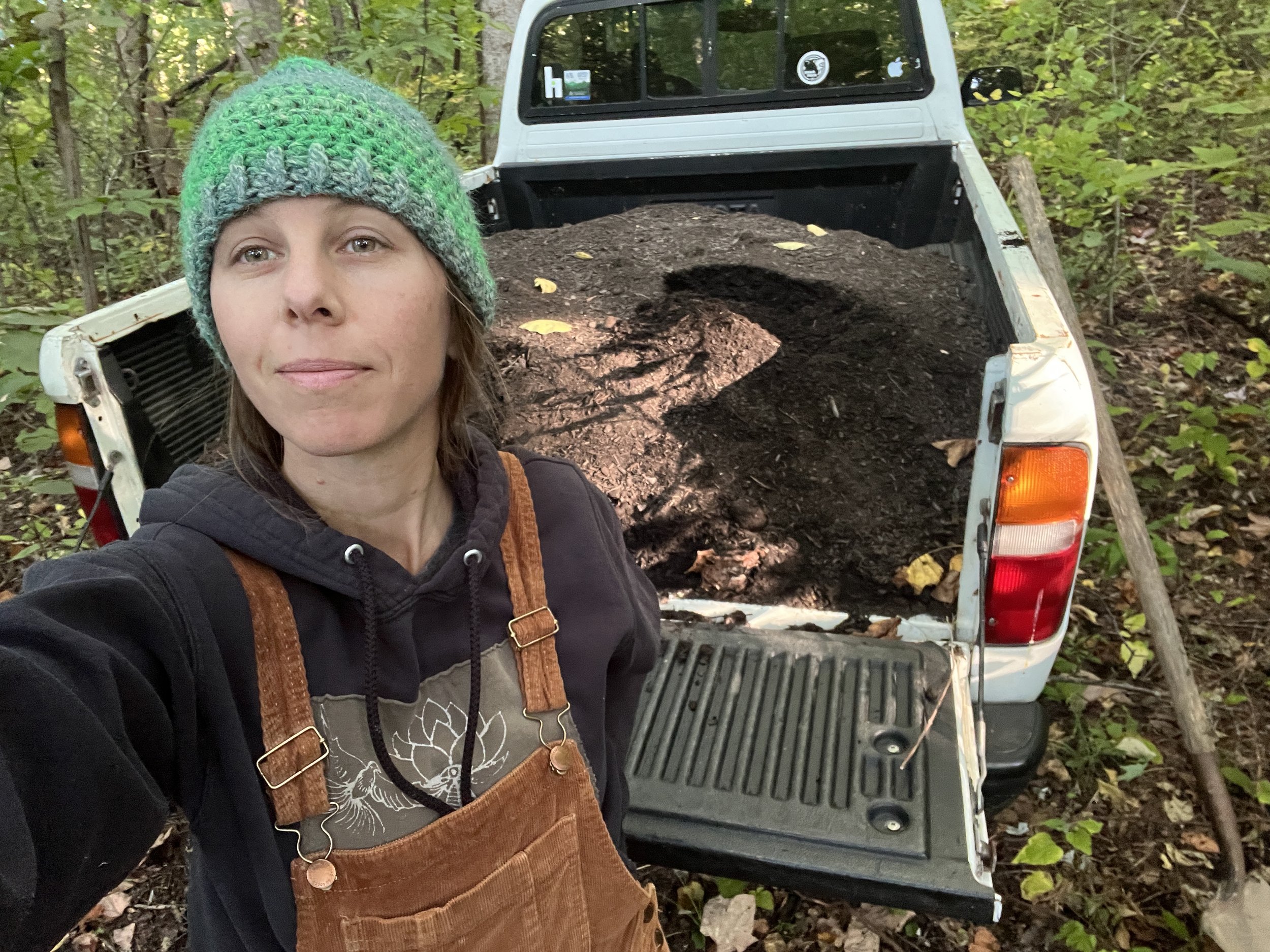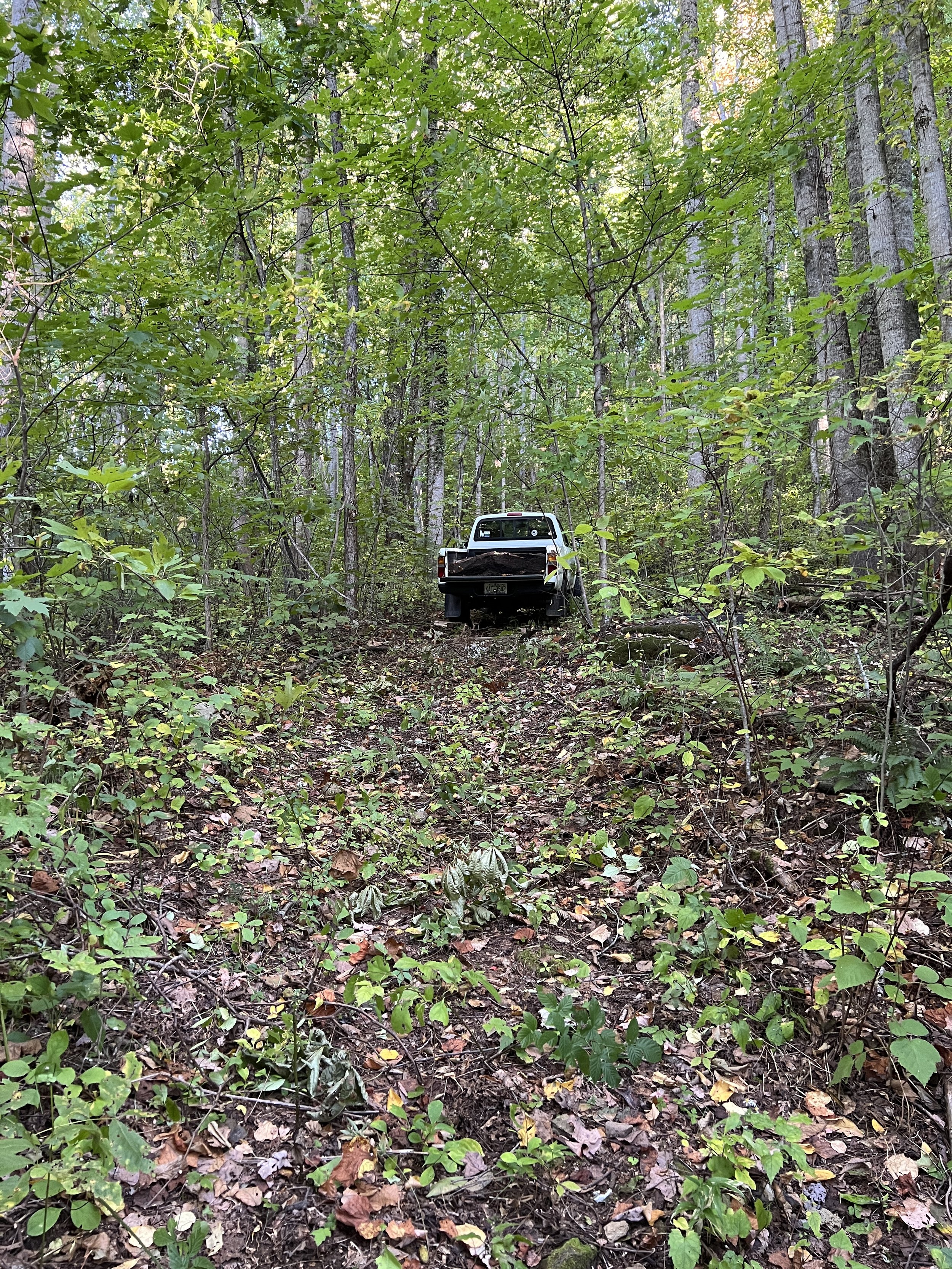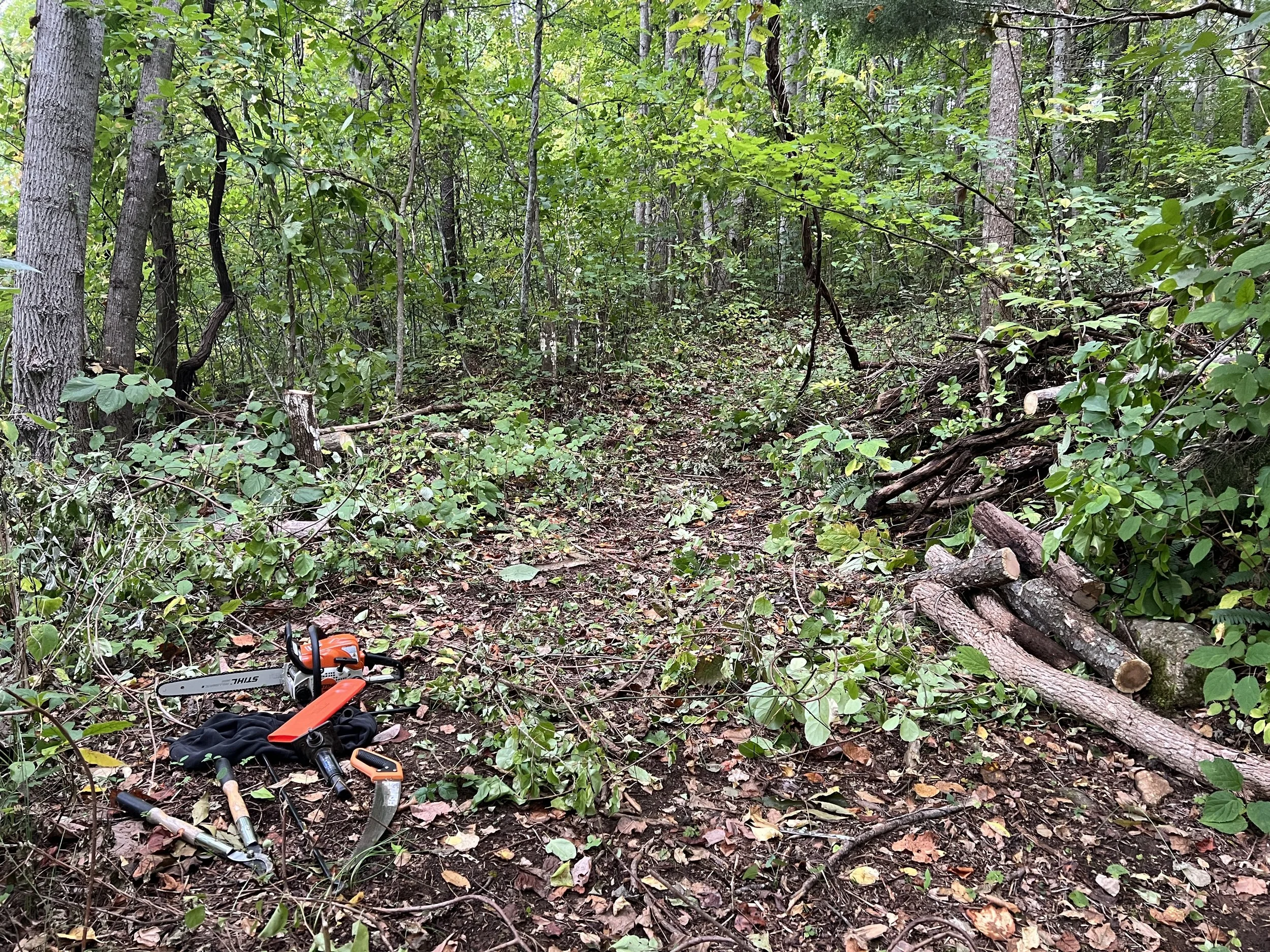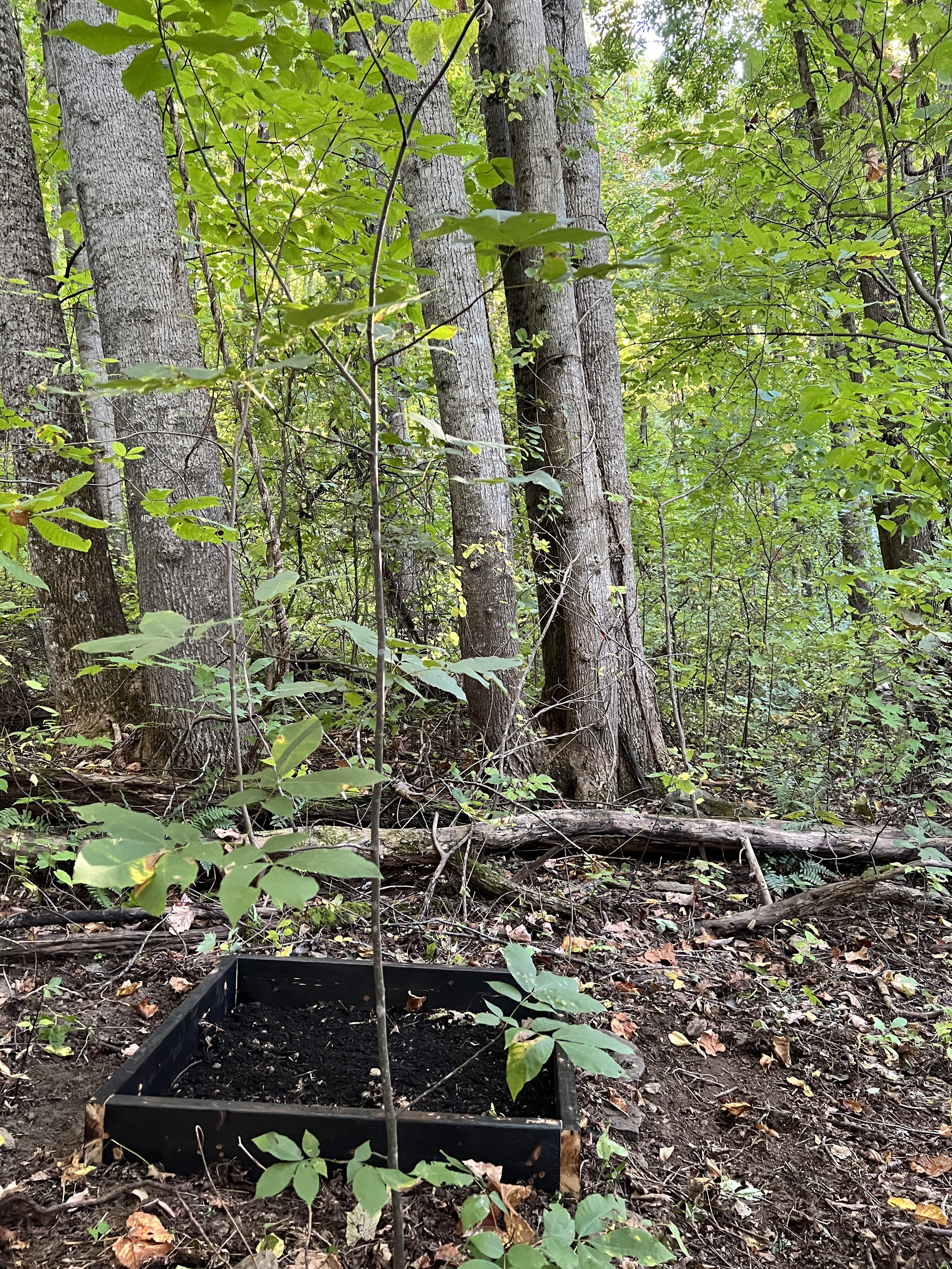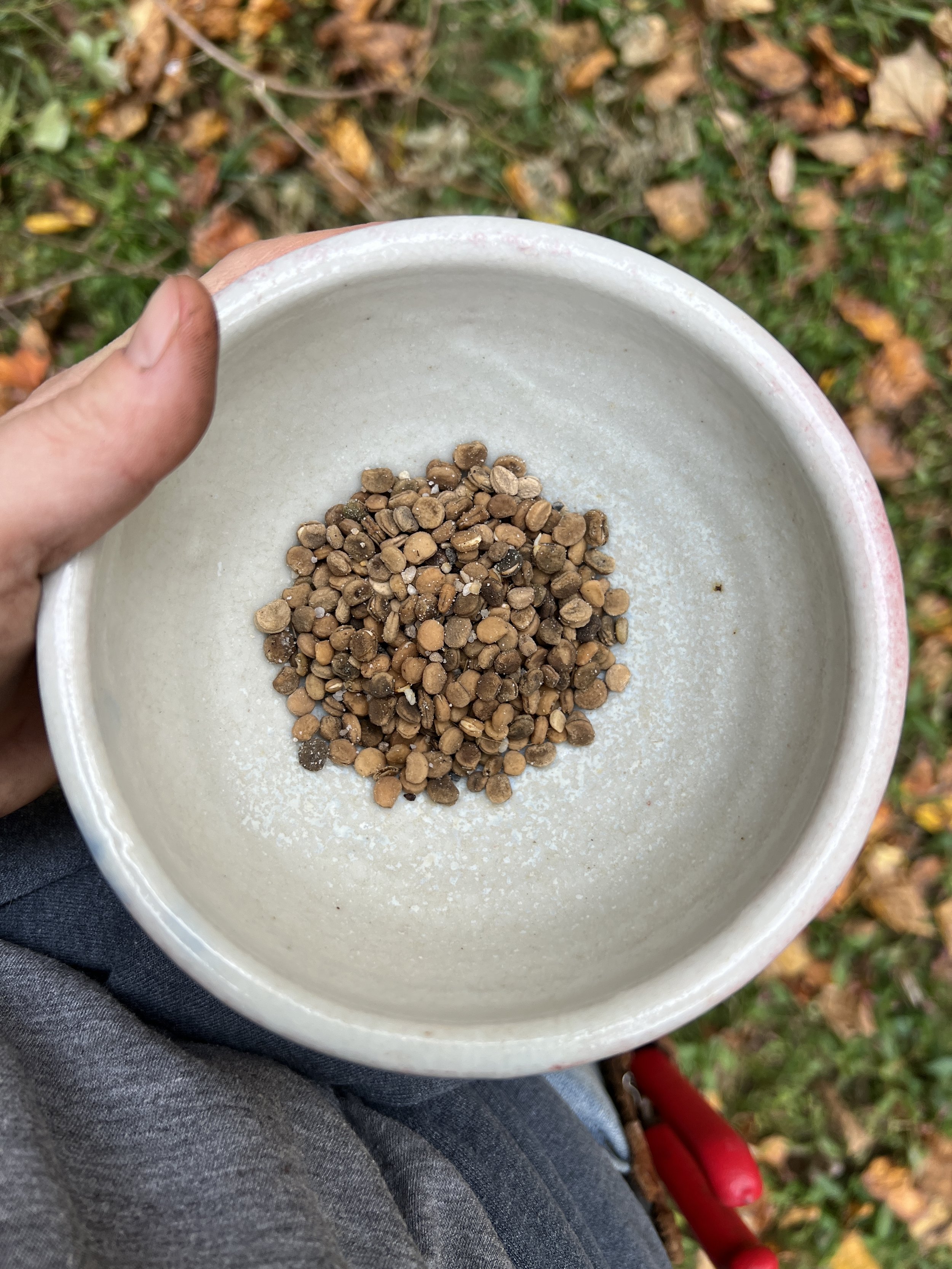In October-November of last year (2022) we planted approximately 6,000+ American Ginseng seeds in the woods. A special thanks to the Catalyzing Agroforestry Grant Program that I wrote about in my first post, for making this huge step towards our. dream possible.
The first thing on our list of work was to build wire covered boxes to start seeds in. These protected nursery beds will keep the seeds safe from rodents, falling limbs, wild turkeys and other woodland happenings while they wait for spring to emerge. We elected to char our non-treated lumber rather than buying pressure treated, and we left one box un-charred to see if we can tell a difference in longevity of the wood.
I cleared an area in the woods above our house. In the winter we can see the boxes from the kitchen, and I love that. I pulled the truck up the old logging road and filled the boxes with a locally available mixture of barks and other types of compost. In the spirit of experimentation I added different amounts of native soil and leaves to the boxes to see if there is any noticeable difference in germination or longevity. After scattering the seeds I patted the soil, and added some nice leaf litter as mulch.
After a long, snowless winter, the time finally came to start checking on the boxes. It got warm early, like way too warm. Things started sprouting, blooming and hatching. It seemed like spring might actually just come early, and then we had a March cold snap. When it came I already had a few seeds that had sprouted in the boxes, so I covered the boxes all with blankets and hoped for the best. It seems like they did ok. Below is how the beds looked just a week or so after the cold snap.
This week there are lots of seedlings in the beds (I counted about 86 in the bed below. I planted close to 300 per bed so I do hope more emerge). The beds of NC Ginseng did way better than the NY seed stock, but that could be because the NY seed stock sat in the fridge a while before I was able to get it all in the ground. The seeds were all good when they went in, and I have had some germination, just not a lot, so hopefully they just went dormant again and will come up next spring. My original plan was to keep it mostly local as far as the seed stock I plant out in our woods, so maybe the seeds are just helping me stay true to that idea. I will keep hoping to see some more life in those beds, though. The grower of the plants that those seeds came from passed away early this year and he was a big deal in the forest farming and Ginseng world. I never got to meet Bob Beyfus but I would certainly like to keep a bed of his Ginseng alive here in WNC. I can’t imaging anything that would make me happier after I pass than to know my seeds were being grown and tended by the next generation.
For the rest of the year I’ll be keeping an eye on these seedlings, and all of the other plantings I’m working with. I’ll be weeding, doing invasive species removal, transplanting plants from the paths, roads and fields to the woods, making paths, marking our property line, and making beds in the forest to plant these seedlings out into next spring. Somewhere in there I’ll also be making pottery!
Emerging mature American Ginseng plant. Lindsay West. 2023. All Rights Reserved.
I am so grateful for the Catalyzing Agroforestry Grant Program, and for the support of the Appalachian Beginning Forest Farmer Coalition, OGS, and everyone involved in this important work of getting more native, woodland medicinal plants into the ground to help ease the tension on wild populations. I am beyond happy to be a small part of this forest farming movement.
dirty hands ~ clear mind


